Balkenkreuz
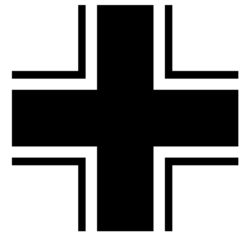
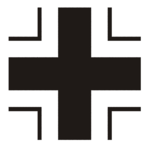
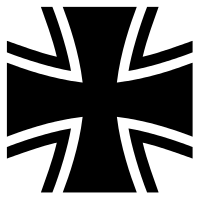
The Balkenkreuz is a straight-armed cross that was the emblem of the Wehrmacht (German Armed Forces) and its branches in World War II. It was used by the Heer (Army), Luftwaffe (Air Force), and Kriegsmarine (Navy).
German Balken means "beam, bar", so a literal translation of Balkenkreuz would be "beam cross" or "bar cross".[1]
History
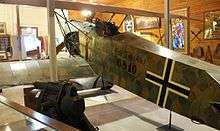
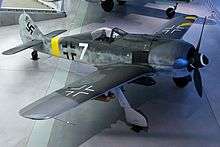
Germany's Luftstreitkräfte (air force) first officially adopted the Balkenkreuz in mid-April 1918 (about a week before the death of Manfred von Richthofen), and used it from that time until World War I ended in November 1918. The IdFlieg directive of 20 March 1918 to all manufacturers states in the first sentence (translated to English): "To improve the recognition of our aircraft, the following is ordered: [...]". In paragraph 2, the second sentence specifies: "This alteration is to be carried out by 15 April 1918." The closing sentence reads: "Order 41390 is to be speedily executed."

Its use resumed, with new standardized dimensions, from the beginning of the Third Reich's Luftwaffe in 1935, as part of the new Wehrmacht unified German military forces founded in mid-March 1935. German armored fighting vehicles (AFVs) during the invasion of Poland (September-October 1939) used a plain white cross, but before the onset of Operation Weserübung (April 1940), the black core cross with white "flanks" that the Luftwaffe used had become the basic German AFV national insignia, as used for the rest of the war (to 1945).
The Luftwaffe would use two specifications for the Balkenkreuz:[2]
- one with narrower white "flanks" on upper wing surfaces - before July 1939, it was used in all six regular positions on an airframe
- one with wider white "flanks" surrounding the same width (25% wide as long from end to end for both versions) central black cross beneath the wings and on the fuselage sides of German military aircraft during the war years
Late in World War II it became increasingly common for the Balkenkreuz national insignia to be painted on without the black-color "core cross", using only the quartet of right-angled "flanks" for its form to reduce its visibility - this could be done in either white or black, and with both the narrow and wide-flank forms of the cross.
Later use
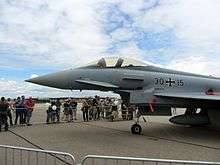
The Iron Cross used by today's German Bundeswehr unified defense forces inherits the four white, or lighter-colored, "flanks" of the older Balkenkreuz that do not "cap" the ends of the cross in either case, but with the "flanks" following the flared arms of the earlier German Empire's cross pattée instead from the 1916-March 1918 era.
References
- ↑ "Dictionary of Vexillology: B (Banner Roll - Bauceant)". Dictionary of Vexillology. FOTW Flags Of The World. Archived from the original on 24 October 2012. Retrieved 19 August 2012.; etymologizing "balk cross" in "Dictionary of Vexillology: B (Backing - Banner of Victory)". Dictionary of Vexillology. FOTW Flags Of The World. Retrieved 19 August 2012.. C.f. th erroneous rendition as "Balkan Cross" in John Cochrane, Stuart Elliott, Military Aircraft Insignia of the World, Naval Institute Press, 1998, p. 50.
- ↑ Bert Hartmann. "Luftarchiv.de - Kennzeichen - Allgemein, Abb.4". Luftarchiv.de. Retrieved November 21, 2012.